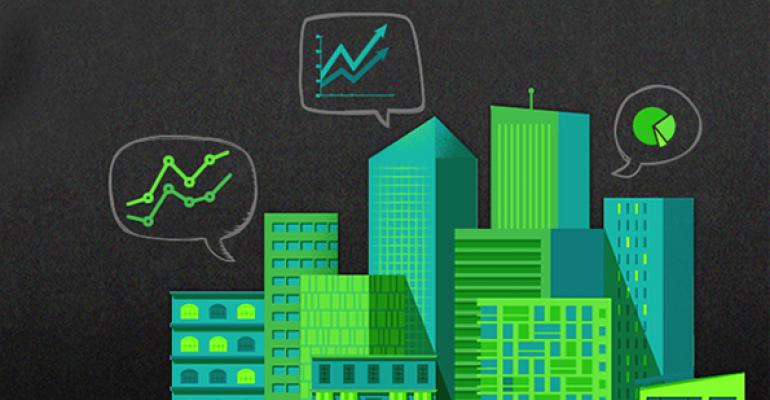There is no perfect science to investing in real estate. Whether pursuing a particular niche strategy for your portfolio or purchasing based on anticipated market fluctuations, the end goal is usually to increase the overall value. And while many investors look solely to raise the value through more purchases, one of the best alternatives might already exist in your portfolio.
Consider enhancing the sustainability of your properties with the greatest potential for growth. While there may be some initial capital investment required upfront, it can generate short and long-term savings on operational and maintenance costs, and increase the value of a property. A recent study in Urban Studies Journal showed that green buildings can cause gentrification, increase transaction value by 5 percent and increase overall rental value.
Improving a building's sustainability does not always require large capital investment. Reducing energy consumption will increase a building’s Energy Star score, which is an indication of a building’s overall energy performance. A high Energy Star score makes it much easier to achieve LEED certification for a property. Together, Energy Star and LEED certify the overall green operation of a building. Optimizing existing infrastructure to reduce energy consumption is a great way to increase the Energy Star score with a high return on investment.
Every day, buildings are generating a constant flow of data that can be easily captured and analyzed. This flow provides opportunities to better understand equipment and energy usage trends, plan preventative and routine maintenance, and figure out how to achieve optimal system performance. This can all be overlooked by operators, who often use this data more reactively to make small, incremental improvements against any outlying anomalies within their building. However, many operators are unaware of the extent of the opportunity they have to utilize this data to improve their building’s sustainability, longevity and performance.
Nonetheless, knowing what areas of the building can produce the highest quality and most cost-productive data can be half the battle. Low-cost technology and Building Automation Systems (BAS)—such as utility sub-metering and increased sensor infrastructure—can help create extensive, useful data and ample opportunities to improve building and system performance and sustainability.
Building automation systems do an excellent job at compensating for troubled equipment often at the cost of energy efficiently. Using existing equipment or augmenting with additional low cost sensors and meters can help identify trouble areas that are hidden by the automation system. The following are areas within a property most commonly identified as ripe for improvement or optimization to increase sustainability:
- Temperature sensors and set-points. A building’s room temperature sensors are one of the most prominent—and easily accessible—areas that can use data to improve trouble spots. Examining sensor data can show areas that are constantly overcooled or overheated or where the HVAC is compensating for mechanical or design issues. Pragmatically identifying and correcting these troubled areas can produce a significant reduction in overall energy as well as increasing occupant comfort—both are considered during the LEED certification process.
- Air handlers. Moving and conditioning air is one of the most expensive operations in a building’s energy profile. Ensuring optimal operation is very important to managing a building’s energy consumption. Examining BAS data can show if the air handlers are set up correctly or if they are preforming inefficiently. Are the economizer dampers working correctly? Is the cooling system compensating for a leaking heating valve? Is there too much or too little outdoor air? All of these questions can be answered with data from a BAS and corrected with basic maintenance or adjustments but will can a big impact on building energy.
- Utility and sub-meters and interval data. Metered data provides granular insight into a building’s operations. By looking at energy consumption of a building or system in 15-minute intervals over time, it is easy to spot inefficiencies and identify areas for optimization. This data can show if the building’s energy trend matches the building usage profile in terms of schedule and HVAC load. One can easily spot if the HVAC and lighting systems are coming on too early or if they are enabled afterhours. Further, is the buildings energy performance improving over time or is something causing decreased efficiency—good targets for ensuring consistent optimized operations.
Owners can ensure their buildings remain profitable over a long period of time by analyzing and using data. Through continuous commissioning, owners are able to go through their buildings and use data to provide a thorough process to look into the design of their systems, how they function and trend over time. Ultimately, it creates an optimal, profitable property, which is a win-win for real estate investors.
Brian Barmmer is vice president of technology solutions and sustainability for DTZ, a global leader in property services. He has more than 15 years of facility management experience, including extensive work implementing technology to increase sustainability.

